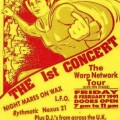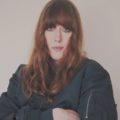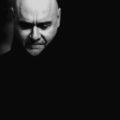
Elevator Sound present a new series of articles for those looking to patch into the world of modular synthesis
One of the leading independent music hardware stores who specialise in Eurorack modular, synthesisers & drum machines in the UK, Elevator Sound is a highly respected team of friendly, like-minded machine music enthusiasts based in Bristol.
They’ve kindly agreed to present a series of articles for Innate, to help those of you thinking about taking the plunge and patching yourself into the world of modular synthesizers.
If you have you have yet to visit the store on Stokes Croft in Bristol, you’ll be pleased to know their highly knowledgeable and friendly staff have been around the block a few times over the years. Where they really win out in terms of equipment and service is they’re more interested in showcasing exciting, unique and high-quality affordable products – rather than what’s cool or popular.
Having dedicated their time to making, listening and playing music for decades, they’re more than happy to help you find that dream machine to create that noise you want. Which is why we couldn’t think of better people to ask how all these wires and pieces of equipment plug in.
Ben Chilton, head of sales, web and customer support takes it from here:
It’s pretty difficult these days to exist in the sphere of production and dance music without being blasted by Youtube adverts and Instagram posts of walls of shimmering lights, hundreds of knobs and the endlessly tangled spaghetti of cables – yes, we’re talking about modular synthesizers!
Long hidden amongst the dark and dusty rooms of academics, top flight studios and artist residencies, in the last 10 years modular has really come to the forefront of the hardware conversation. Since Doepfer introduced their ‘Eurorack’ standard in the 90s, we’ve seen companies crop up in every corner of the world – each creating gear with their own take on modular and inspiring a whole new generation of cable patchers & knob twiddlers.
‘Eurorack’ and Modular
Modular is the format, a system made of interchangeable synthesizer parts connected together manually to create a whole instrument.
As such, Modular Design has existed in the wider design world for quite some time: infact IKEA furniture and LEGO are both common examples of interchangeable, modular design. But in the world of synthesizers, ‘Eurorack’ is the design standard. Before Eurorack came about, you simply couldn’t use Moog Modular with Buchla modules, or Serge modules. As they were all different sized pieces of equipment, ran off different power supplies and communicated with different level signals.
However, when Eurorack came along, they standardised the format. Meaning that companies from all over the world now design to the same specifications, so you can use any Eurorack module with any other Eurorack module, in any Eurorack case!
The standards set out are:
HP, or Width
This stands for ‘Horizontal Pitch’, cases are often found in 60, 84, 104 or 126hp options but there are plenty of other sizes and custom lengths available. Modules can be anywhere from 2hp up to 40hp and beyond, although a majority tend to fall within a 4hp-20hp range.
U, or Height
U is a standard measurement for both Eurorack and 19” rack mount units, so it’s commonly found amongst other gear.
Eurorack modules are mostly all 3U in height (with the exception of special 1U ‘tiles’, which we’ll explore in the future). Due to this cases are measured in multiples of 3, depending on how many rows of modules. 3U = 1 row, 6U = 2 rows, 9U = 3 rows, and on and on!
Power!
Arguably one of the most important things about modular systems is power, as modules can be swapped out at will each one is powered independently.
Each case needs a power supply (some come built in, some as separate modules) with either board or cable with lots of connection points for plugging in the power cables for your modules. These power solutions have a maximum output on three different power lines, or ‘rails’: +12V, +5V and -12V. Make sure you keep the power draw of your modules below the maximum number of each rail.
You can easily keep an eye on your power by filling out your system on the amazing ModularGrid.net site!
Control Voltage Range
Modular systems communicate using Control Voltage, or ‘CV’.
This allows us to directly control certain parameters without the limitations of digital processing. For instance, by patching a control voltage into the Pitch of an Oscillator, we are directly controlling that value, the same way we would with a knob or slider – only the modules are doing the work for us!
With older systems the range of signal varied between manufacturer, so what would give you perfect concert pitch on a Serge would be horribly out of tune on a Moog. However with the Eurorack standards of maximum signal and ‘1 Volt per Octave’ tuning, everything works perfectly.
That’s the basics, not super exciting but important to know!
So you’ve got a case, got some power and you’re raring to get going. Where to start?
This is the question we get most down at Elevator Sound and I think it’s important to have an idea of what you’d like to build, after all it’s your very own custom instrument!
There are so many modules out there nowadays that it can be pretty overwhelming, however taking into consideration things you definitely DO want, can really help narrow things down.
Do you want
- Some stereo FX processing?
- Ability to route external instruments in?
- Live sampling?
- Groovebox style voices + percussion?
This can all really help with getting started in the right direction – and if you get something that isn’t really doing it for you, that’s okay. Thanks to the very nature of modular, just sell it off or swap it out!
As this series progresses, we’ll have a deeper look into the various different types of modules, strengths and weaknesses and where you’d fit in a wider system or even studio setup. We’ll also be running through a few different types of systems and the kinds of modules you’d commonly find!
Find out more about Elevator Sound
www.elevatorsound.com
Follow: @elevatorsoundbristol
Sign up to the Elevator Sound newsletter for weekly updates from the synth realm.





